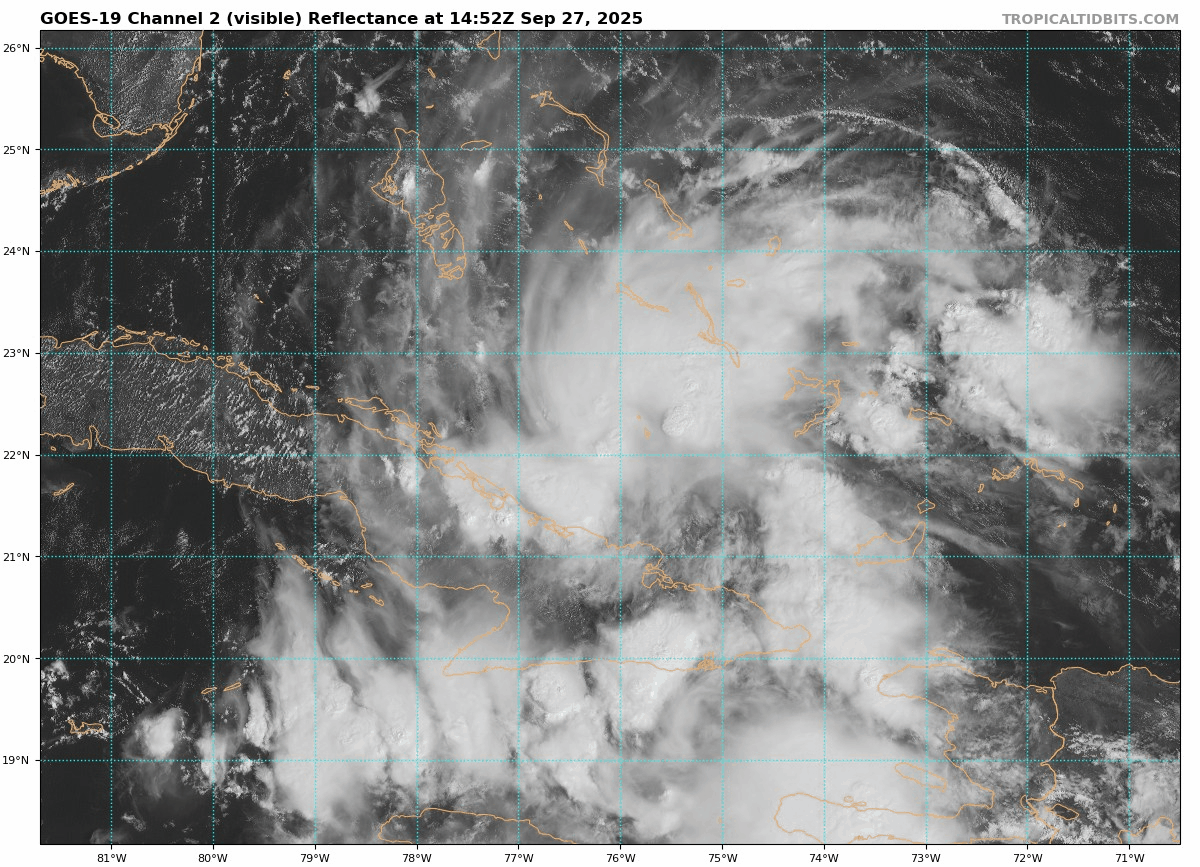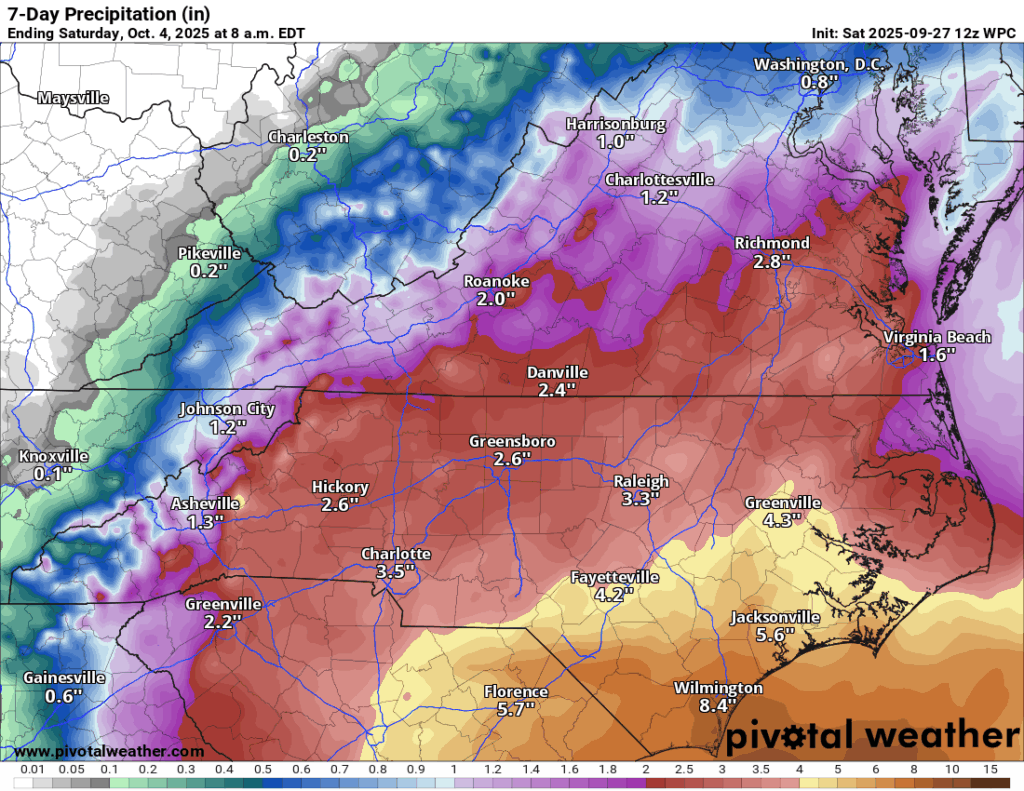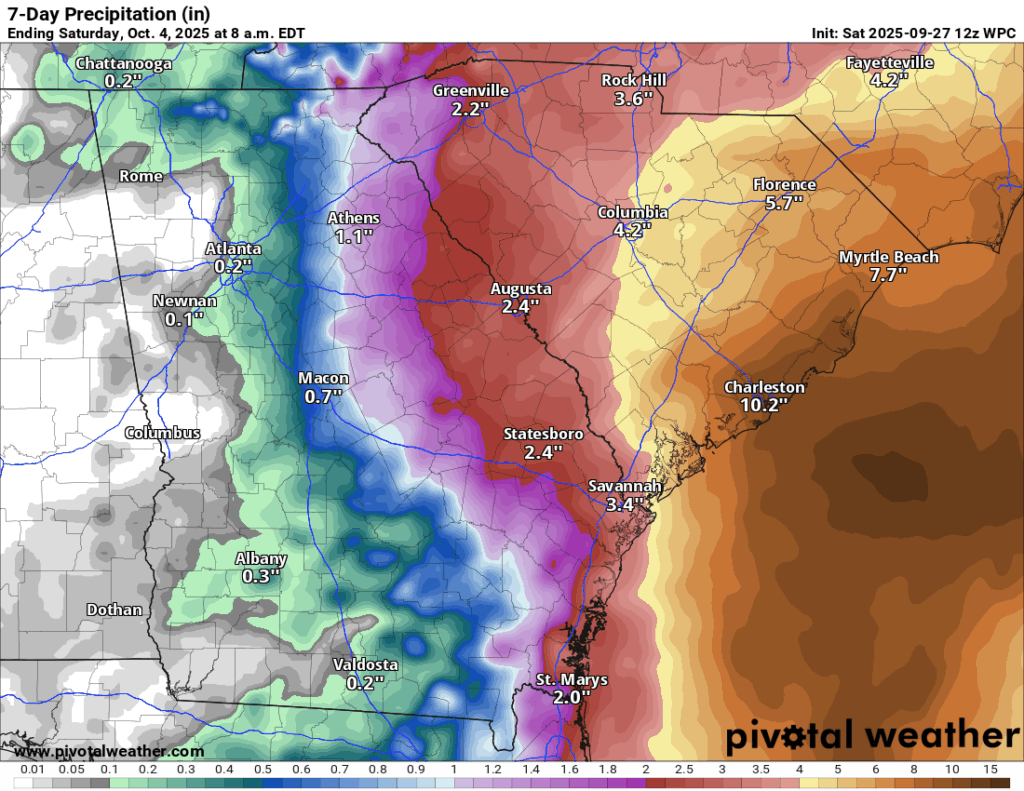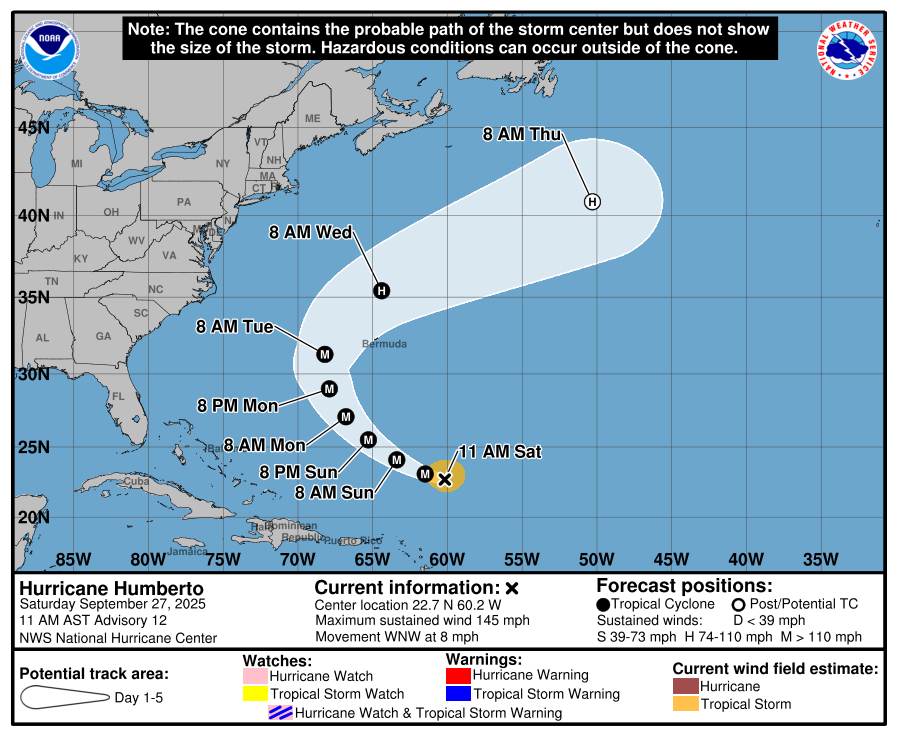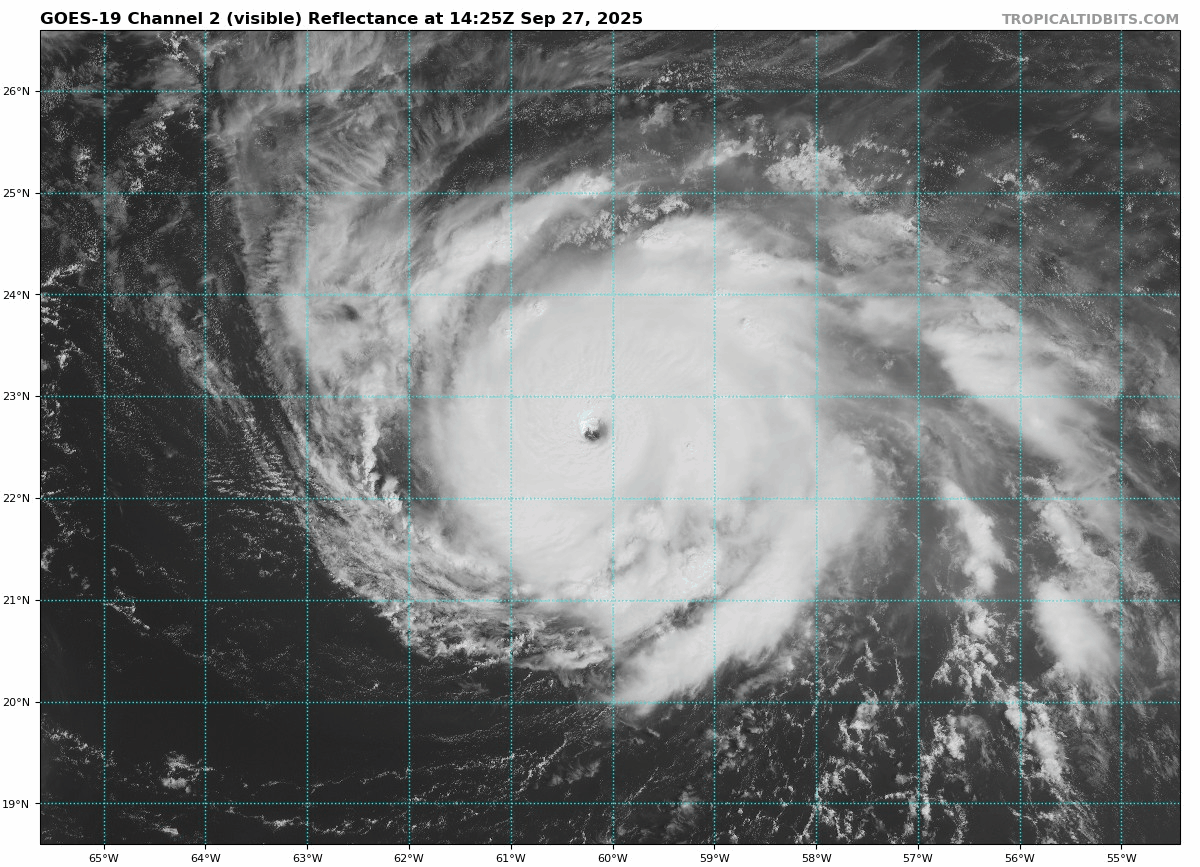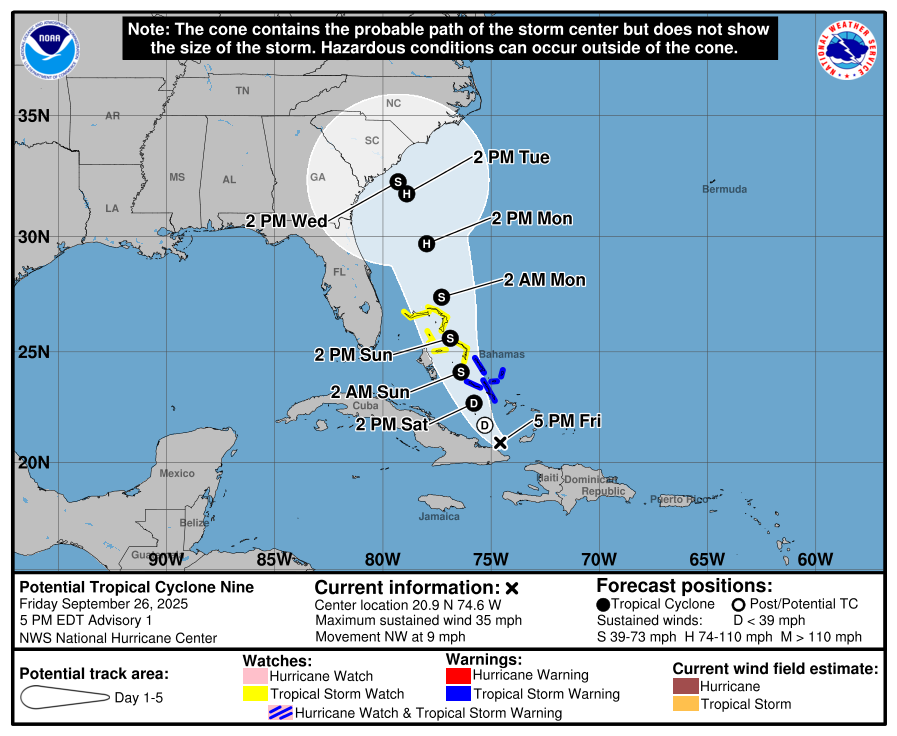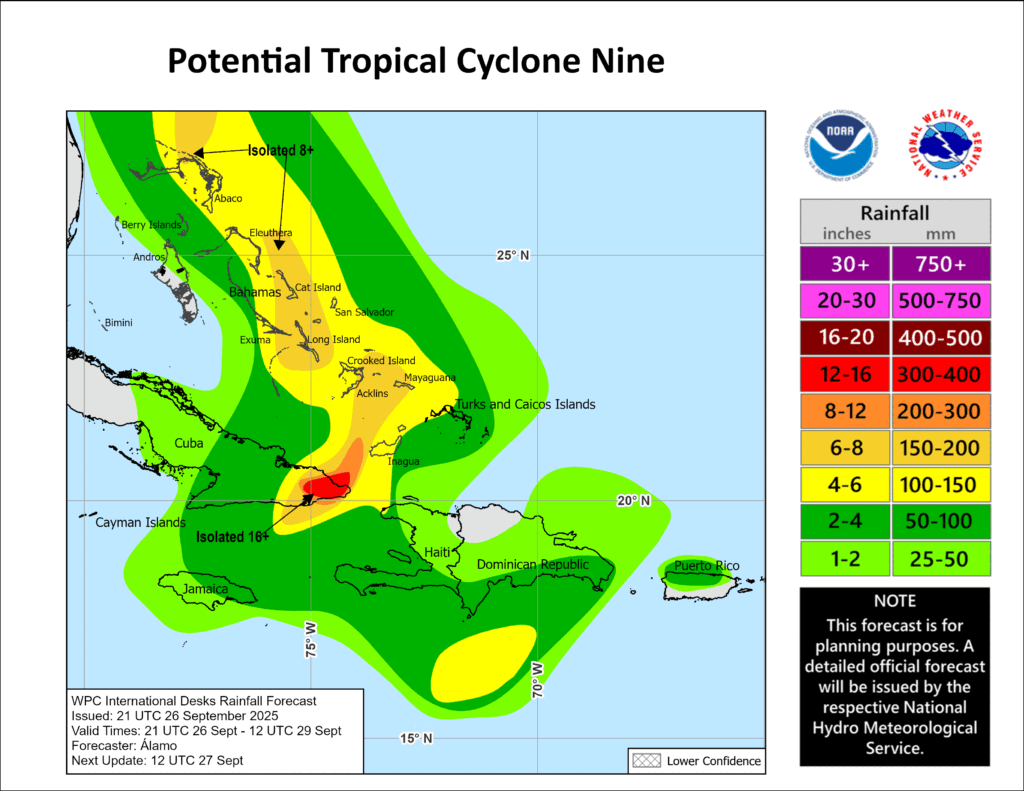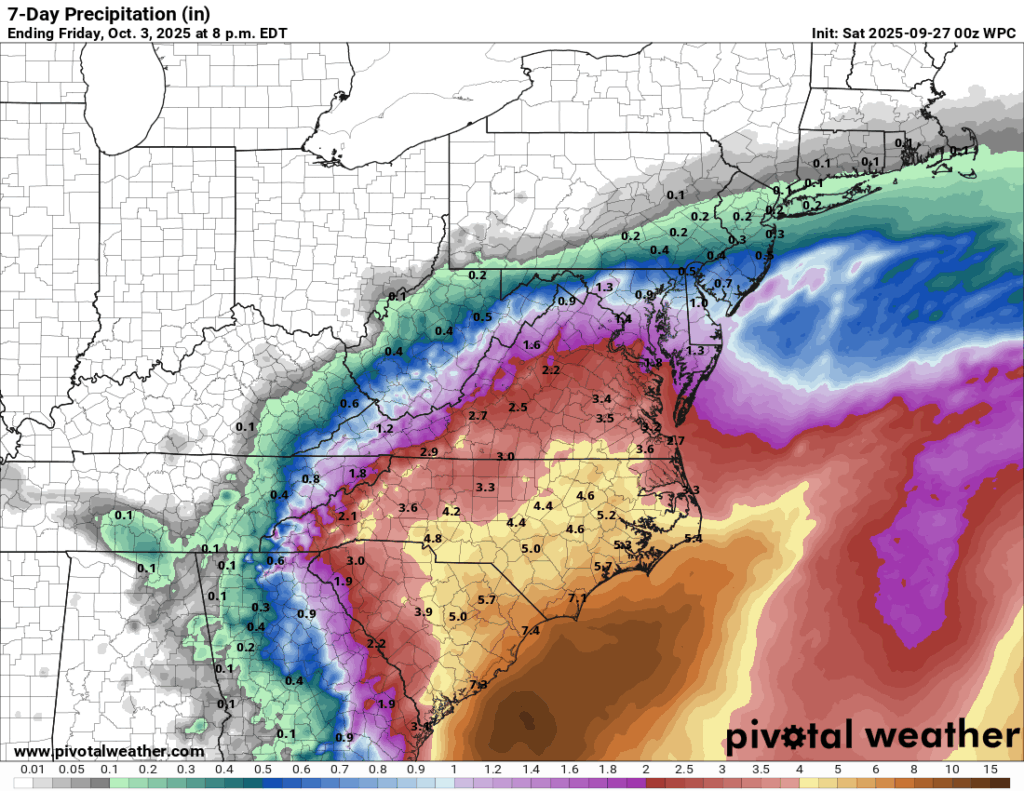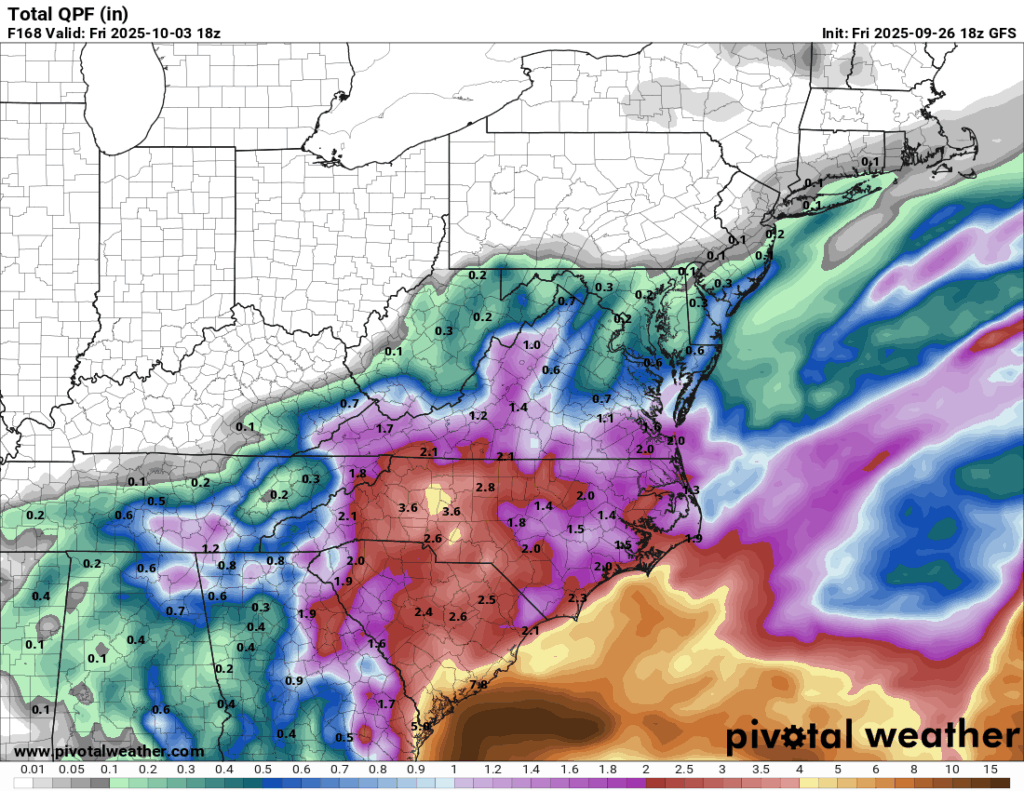In brief: Tropical Depression 9 remains a royal headache of a forecast. While the risk of an East Coast landfall seems to have diminished some since yesterday, the threat of heavy rain on the Carolina coast remains. But there are still many questions left to be answered. We try to explain what those are today.
Tropical Depression 9
Good morning! Tropical Depression 9 has formed off the north coast of Cuba this morning. It is no longer Potential Tropical Cyclone 9. We do expect the system to acquire a name as a tropical storm later today, which would be Imelda.
TD 9 is unlikely to rapidly intensify in the near-term, though probabilities are around 2 to 3 times climatology (normal) for the extended timeframe (days 2-3). So watch for TD 9 to slowly organize today and tonight into tomorrow. Modeling has been pretty consistent on the intensity front. For as much uncertainty as this storm has had, we’ve pretty much known that this would probably slowly form into a tropical storm and eventually a hurricane. From the NHC discussion today, there is some hints that wind shear will impact TD 9 eventually, which means it probably won’t look as healthy on satellite as its compatriot to the east, Humberto.
Let’s talk track. If storms had sponsors, TD 9’s would be Excedrin because it’s a headache inducer. The hurricane models are actually in pretty good agreement this morning, certainly the best we’ve seen in this system’s life cycle.
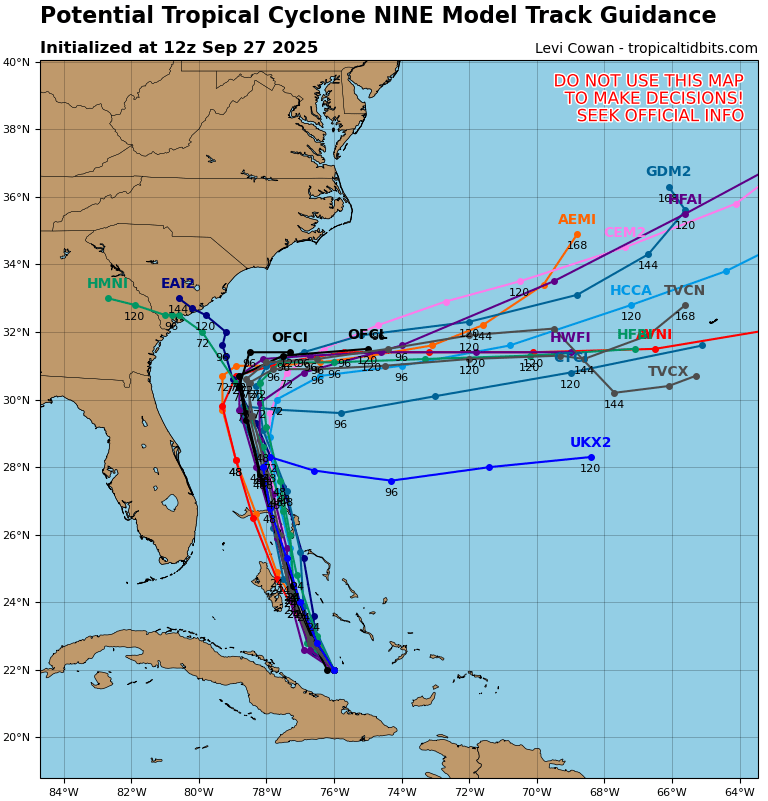
This is an improvement over last night. Recall, in yesterday evening’s post we discussed rainfall scenarios, and the one that hurt the most was the operational Euro which sat the storm right on the coast for a couple days. It appears that the Euro backed off significantly overnight, It keeps the system offshore and backpedals on rain totals by multiple inches. Good news.
That said, the European ensemble’s spread of solutions is a bit less confident in what ultimately happens to TD 9.
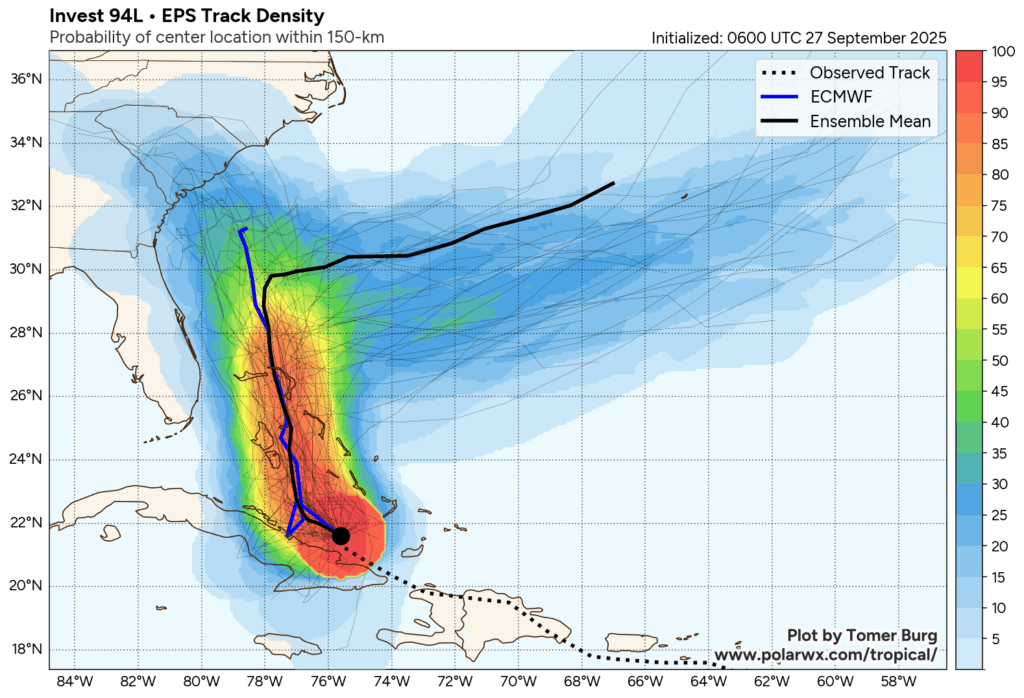
To understand how this will all play out, you almost need a football play diagram. There are four players on the field, including TD 9 itself. Here’s a forecast map for Sunday morning that shows how each feature will be trying to impact TD 9.
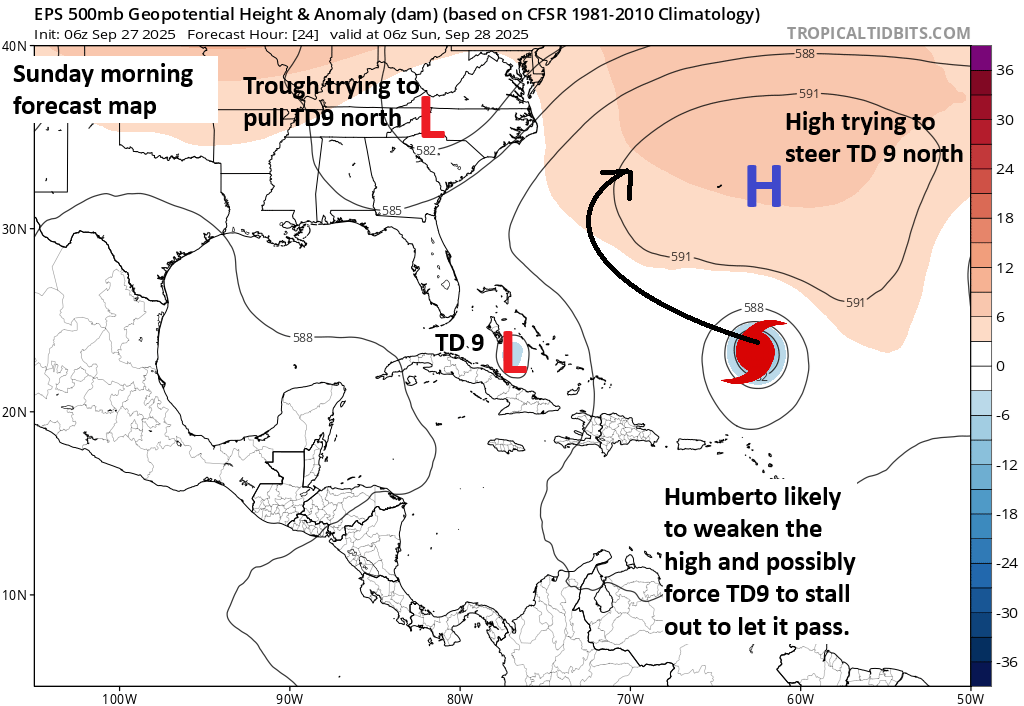
The trough over the Southeast is going to try and nudge it toward the coast, while the Bermuda high will impart a south to north motion on TD 9. Meanwhile, because Humberto has become a bit of a beast, it too will leverage influence on TD 9, probably canceling out the south to north motion as it passes to the east, as well as weakening or completely shelving any impact of the Bermuda high. Why? Since Humberto is a large storm, the wind around it is counterclockwise, as it passes TD 9 to the east, imparting north to south winds on the steering of TD 9. In that case, Humberto will be trying to push TD 9 back south. The end result of all this depends on the strength of each feature, but in general it likely means that TD 9 will meander or stall for a day or so as Humberto passes, which is expected to occur on Tuesday. Exactly where this stall or meander occurs will determine what impacts are experienced on the Carolina coast.
The question after that point becomes whether TD 9 or Imelda follows Humberto out to sea or if it gets left behind to meander in the western Atlantic. The tropical models tend to think it follows Humberto, and the NHC track follows that. But you can see how on last night’s 6z European model. TD 9/Imelda gets left behind as Humberto exits. You can also see how Humberto impacts TD 9 as it passes.
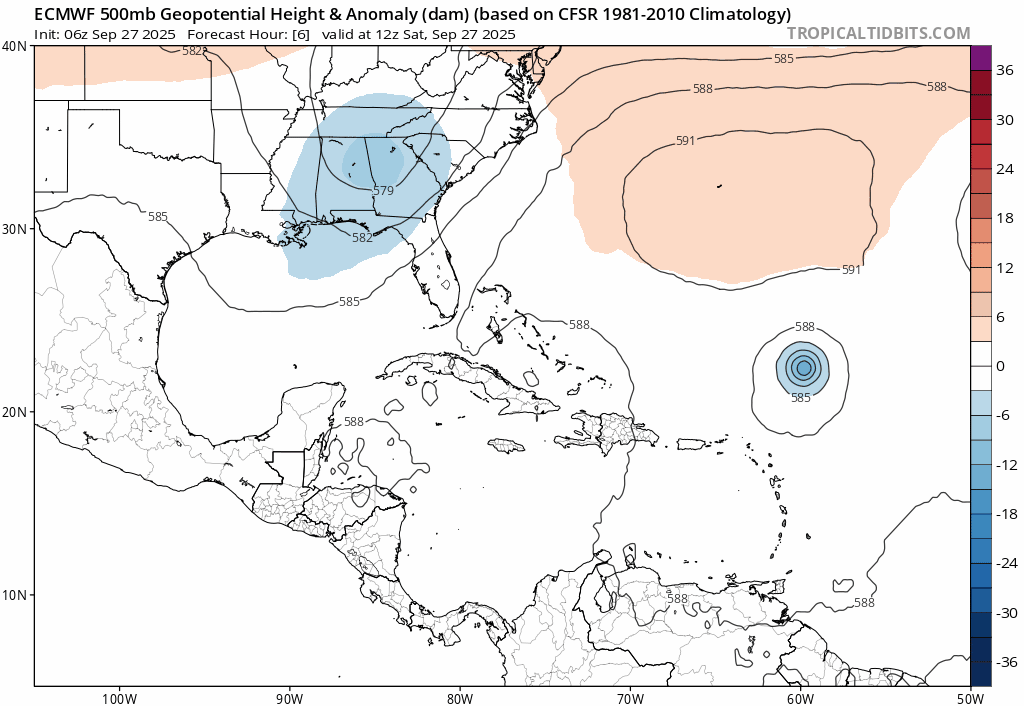
Let’s exhale for a moment. That’s a lot. It’s complicated meteorology. That’s the reality of tropical systems. They aren’t easy. We say at least once per hurricane season that “we can’t remember such a difficult forecast.” Well, welcome to tropical weather forecasting, kids. It’s not for the faint of heart.
Alright, let’s look briefly at the rainfall situation. Obviously, this entirely depends on how close to the coast TD 9/Imelda gets. A storm closer to the coast will deliver more rain, while a storm that hangs offshore but not totally away from the coast will produce slightly less rain. Either scenario produces significant rainfall. It’s just that one is far worse than the other.
For now, the WPC forecasts above represent the likely rainfall outcome based on the NHC forecast track at the top. Again, this will vary depending on where the stall occurs. It will also vary based on whether the system gets left behind as Humberto exits, which could potentially raise the stakes some. Questions we cannot yet answer.
In addition to the heavy rainfall and likely flooding risk in the coastal plain of the Carolinas, there will be rough surf, rip currents, beach erosion, and the potential for coastal flooding. Currently, tropical storm watches are posted from the Palm Beach/Martin County line to the Flagler/Volusia County line in Florida. Expect those to be expanded northward either later today or tomorrow. Please consult your local NWS office for more specific details for the coastal communities of interest.
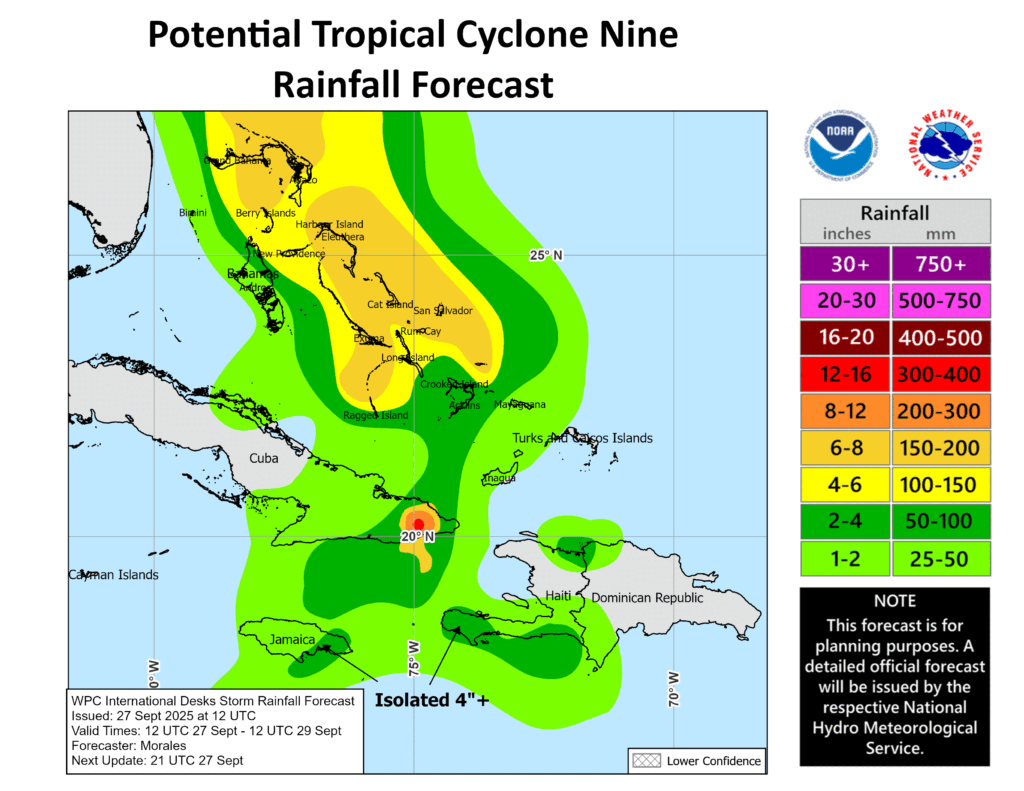
In the Bahamas, heavy rainfall and tropical storm conditions are likely as the weekend continues.
We’ll continue to track TD 9 closely through the next few days.
Elsewhere
Hurricane Humberto? Big time. Humberto is a strong category 4 hurricane with 145 mph maximum sustained winds.
Humberto is expected to pass west of Bermuda only grazing the island with fringe impacts. I wouldn’t be shocked to a watch or warning issued for tropical storm conditions by tomorrow, but for the most part, Humberto is not a huge deal for Bermuda. The combination of Humberto and TD 9 will kick up surf along the entire East Coast.
Also, off to the east, the remnants of Gabrielle are heading into Portugal. It is now expected to come ashore there later today, bringing locally heavy rain.
Nothing else out there to monitor for now.

